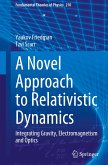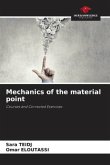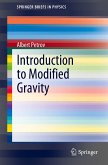This self-contained monograph provides a mathematically simple and physically meaningful model which unifies gravity, electromagnetism, optics and even some quantum behavior. The simplicity of the model is achieved by working in the frame of an inertial observer and by using a physically meaningful least action principle.
The authors introduce an extension of the Principle of Inertia. This gives rise to a simple, physically meaningful action function. Visualizations of the geometryare obtained by plotting the action function. These visualizations may be used to compare the geometries of different types of fields. Moreover, a new understanding of the energy-momentum of a field emerges.
The relativistic dynamics derived here properly describes motion of massive and massless objects under the influence of a gravitational and/or an electromagnetic field, and under the influence of isotropic media.
The reader will learn how to compute theprecession of Mercury,the deflection of light, and the Shapiro time delay. Also covered is the relativistic motion of binary stars, including the generation of gravitational waves, a derivation of Snell's Law and a relativistic description of spin. We derive a complex-valued prepotential of an electromagnetic field. The prepotential is similar to the wave function in quantum mechanics.
The mathematics is accessible to students after standard courses in multivariable calculus and linear algebra. For those unfamiliar with tensors and the calculus of variations, these topics are developed rigorously in the opening chapters. The unifying model presented here should prove useful to upper undergraduate and graduate students, as well as to seasoned researchers.
The authors introduce an extension of the Principle of Inertia. This gives rise to a simple, physically meaningful action function. Visualizations of the geometryare obtained by plotting the action function. These visualizations may be used to compare the geometries of different types of fields. Moreover, a new understanding of the energy-momentum of a field emerges.
The relativistic dynamics derived here properly describes motion of massive and massless objects under the influence of a gravitational and/or an electromagnetic field, and under the influence of isotropic media.
The reader will learn how to compute theprecession of Mercury,the deflection of light, and the Shapiro time delay. Also covered is the relativistic motion of binary stars, including the generation of gravitational waves, a derivation of Snell's Law and a relativistic description of spin. We derive a complex-valued prepotential of an electromagnetic field. The prepotential is similar to the wave function in quantum mechanics.
The mathematics is accessible to students after standard courses in multivariable calculus and linear algebra. For those unfamiliar with tensors and the calculus of variations, these topics are developed rigorously in the opening chapters. The unifying model presented here should prove useful to upper undergraduate and graduate students, as well as to seasoned researchers.








